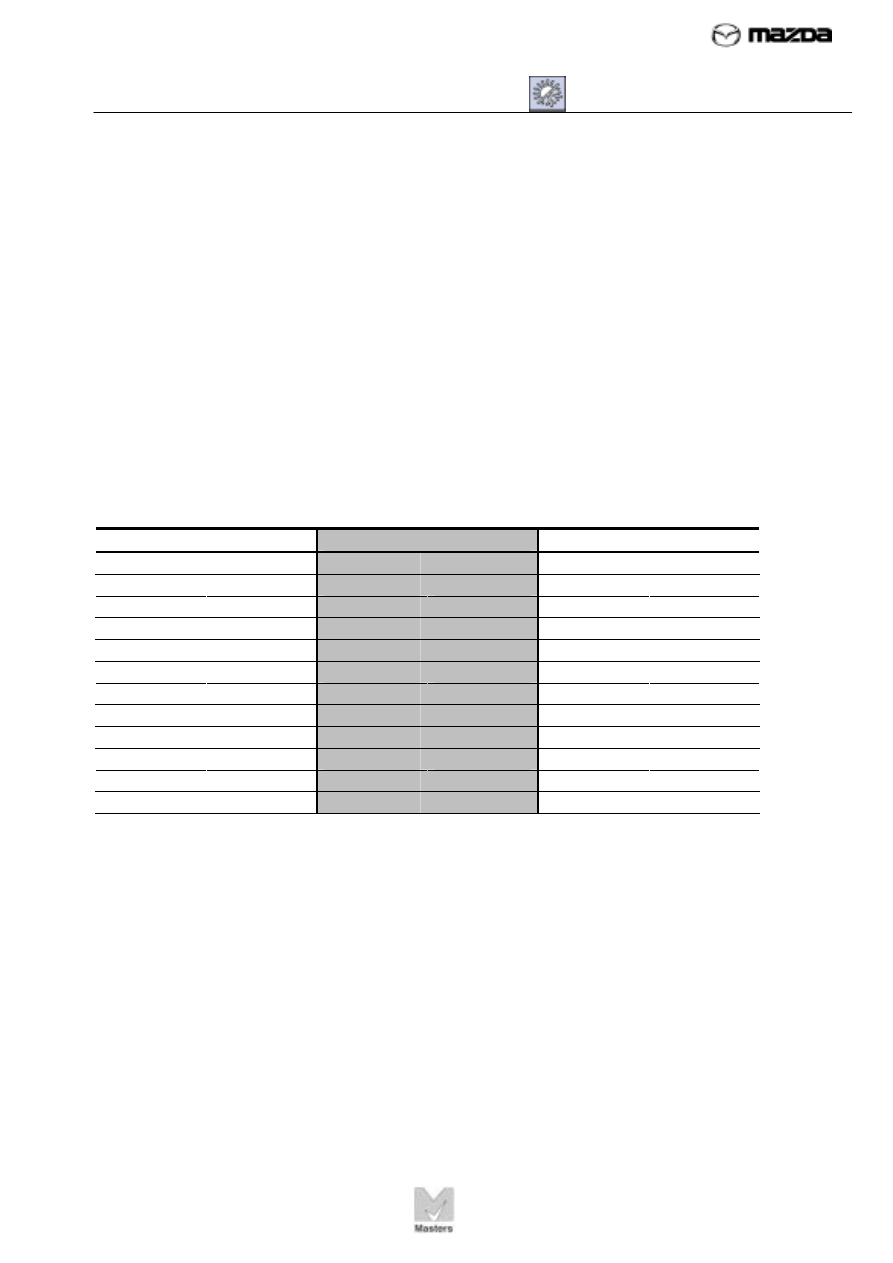Mazda Training manual - part 270

Air Conditioning Fundamentals
TC070-05-01S
7 – REFRIGERANTS
54
5. Before using any recycled refrigerant, always check for air in the tank. Air is a
non-condensable gas; its volume cannot be reduced. This could create a very
dangerous situation. If you have air and refrigerant in a container and you heat the
container, the pressure rises. The refrigerant changes state, but the air doesn't. This
creates excess pressure that can cause an explosion. In addition, under some
conditions, recycled refrigerant mixed with air can be flammable.
Fortunately, there is simple rule of thumb that can help you check for non- condensable
gases in recycled R-12. At temperatures between 25° F and 75° F, the pressure of R-12 (in
psi) should be roughly equal to its temperature (in ° F). For example, if you have a container
of R-12 refrigerant at 75° F, then the pressure should be approximately 75 psi.
You can use the following temperature/pressure relationship chart for R-12. (Notice that the
center column demonstrates the one-to-one relationship between temperature and
pressure.) If the pressure is higher or lower than the listed pressure at a given temperature,
then you probably have air in the tank, and you should not use the container.
R-12 Temperature/Pressure Relationship
° F
Pressure
° F
Pressure
° F
Pressure
-35 8.3* 25
24.6
80 84.1
-30 5.5* 30
28.5
85 91.7
-25 2.3* 32
30.1
90 99.6
-20 0.6* 35
32.6
95 108.1
-15 2.4 40
37.0
100 116.9
-10 4.5 45
41.7
105 126.2
-5 6.8 50
46.7
110 136.0
0 9.2
55
52.0
115 146.5
5 11.8 60
57.7
120 157.1
10 14.7 65
63.7
125 167.5
15 17.7 70
70.1
130 179.0
20 21.1 75
76.9
140 204.
*Inches of mercury (vacuum); all other pressures are in pounds per square inch (psi).